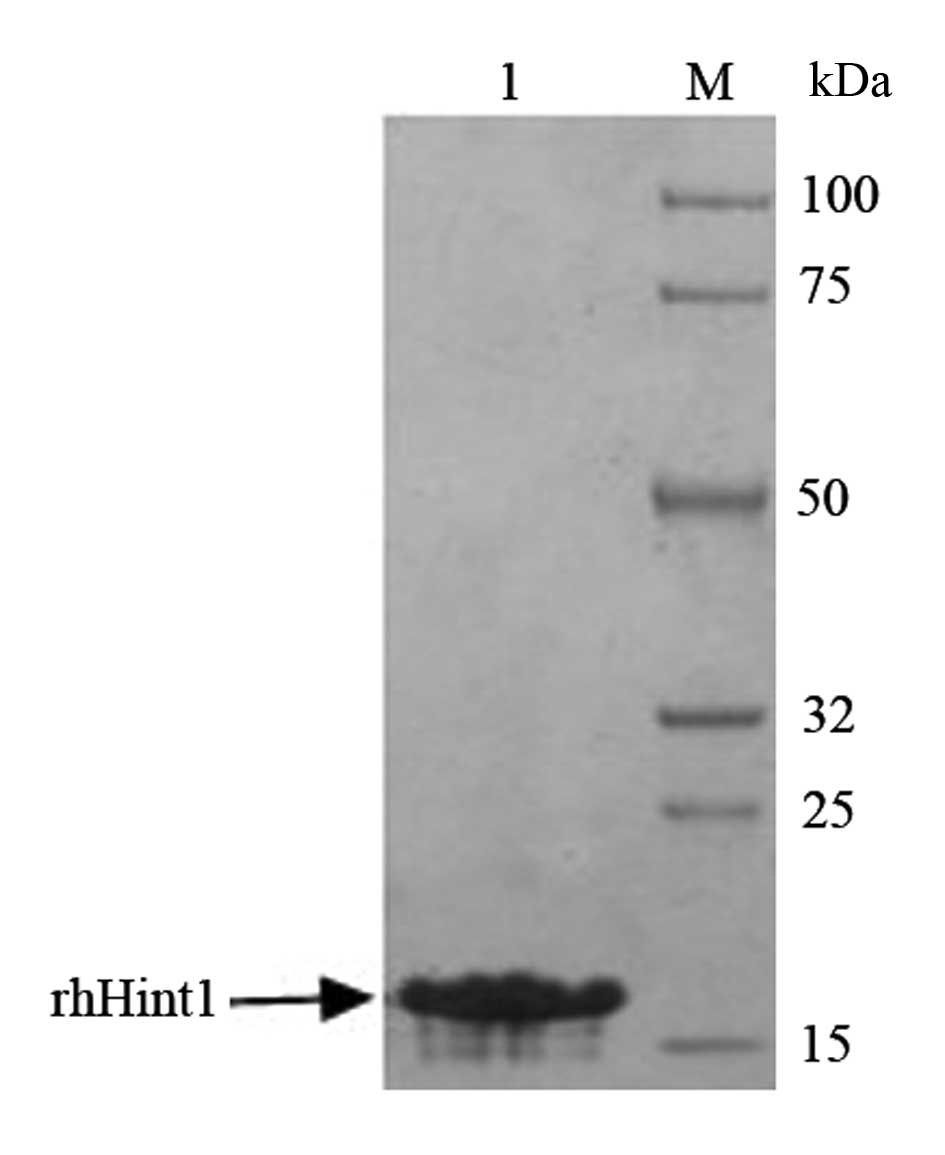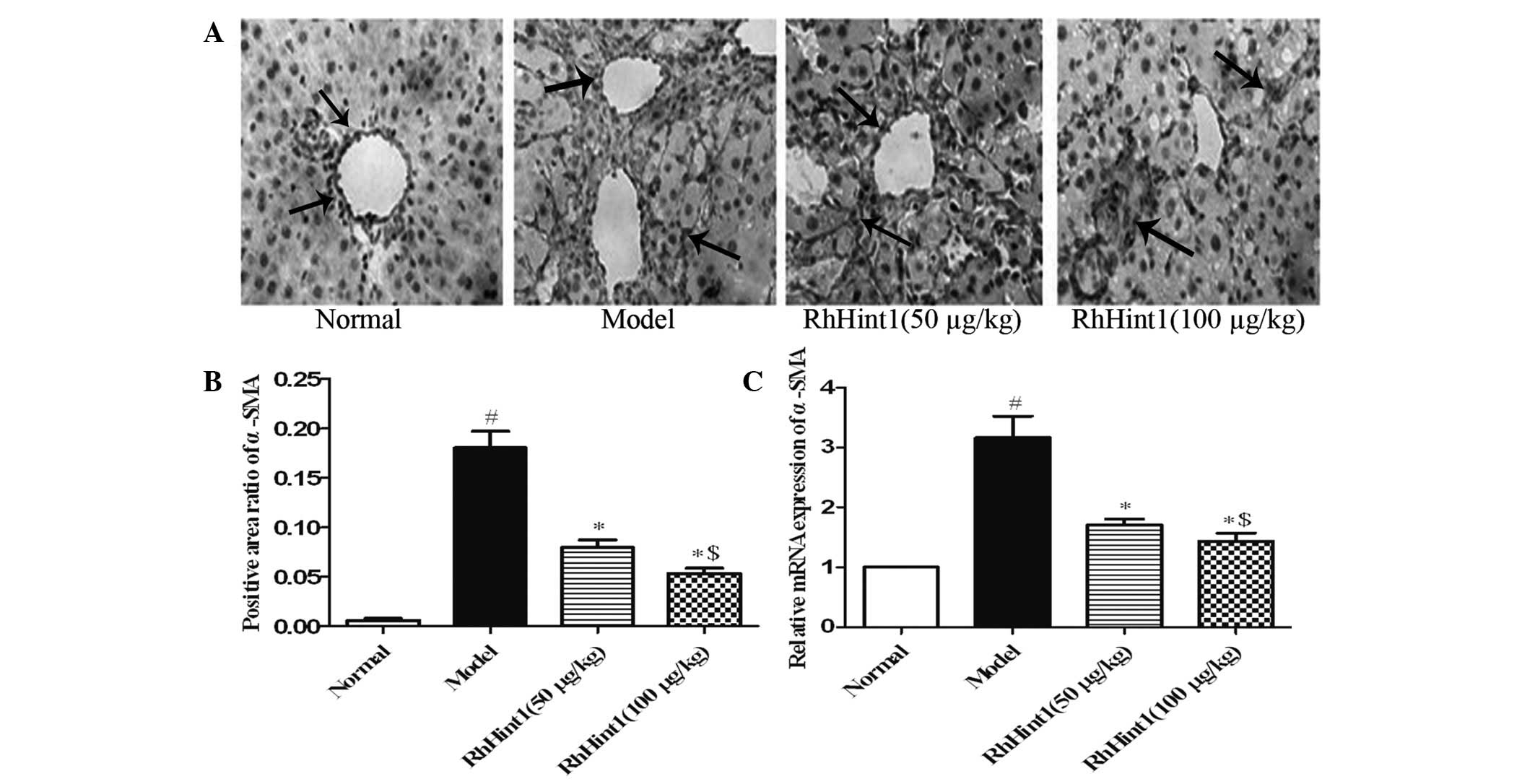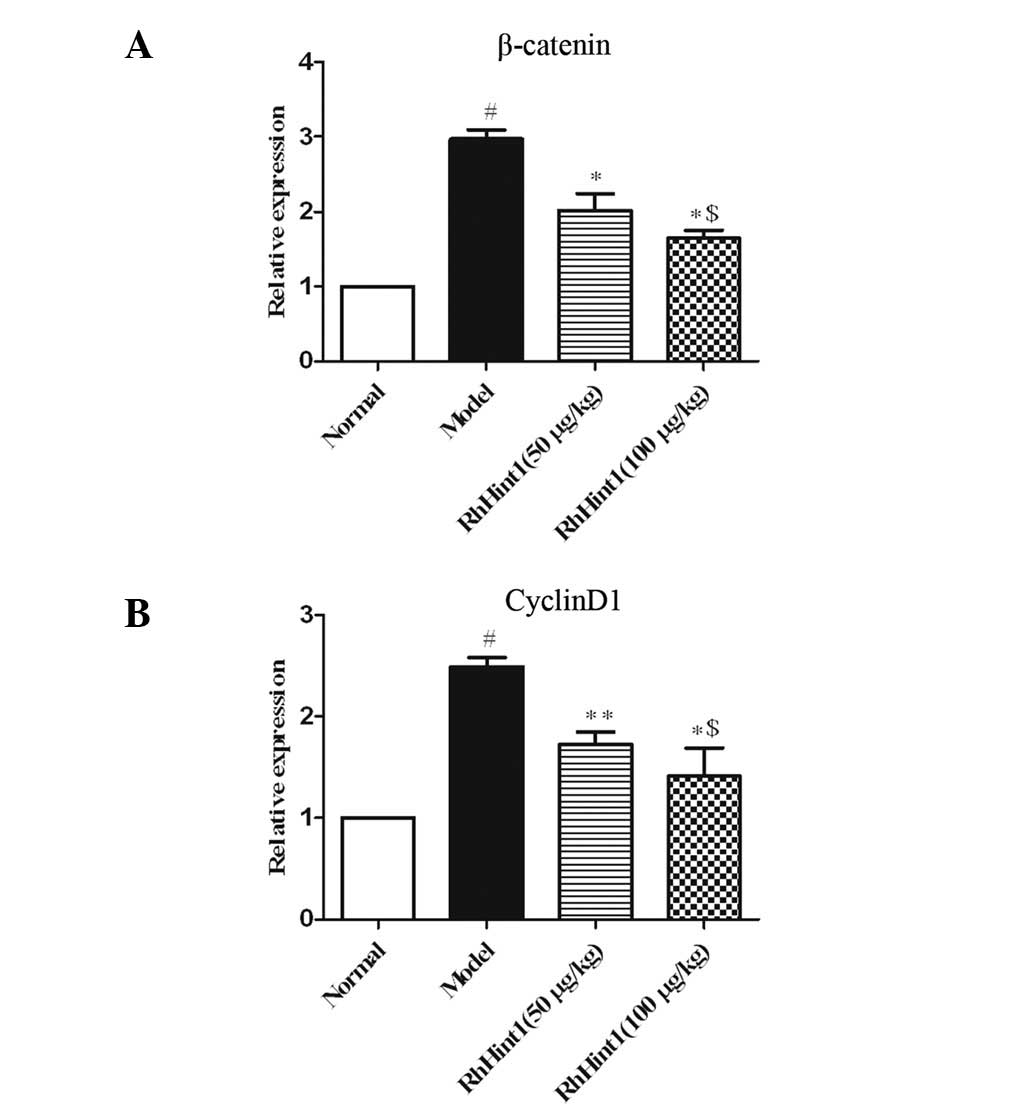|
1
|
Albanis E and Friedman SL: Hepatic
fibrosis: Pathogenesis and principles of therapy. Clin Liver Dis.
5:315–334. 2001. View Article : Google Scholar : PubMed/NCBI
|
|
2
|
Gutierrez-Reyes G, Gutierrez-Ruiz MC and
Kershenobich D: Liver fibrosis and chronic viral hepatitis. Arch
Med Res. 38:644–651. 2007. View Article : Google Scholar : PubMed/NCBI
|
|
3
|
Friedman SL: Liver fibrosis - from bench
to bedside. J Hepatol. 38:S38–S53. 2003. View Article : Google Scholar
|
|
4
|
Parsons CJ, Takashima M and Rippe RA:
Molecular mechanisms of hepatic fibrogenesis. J Gastroenterol
Hepatol. 22:S79–S84. 2007. View Article : Google Scholar
|
|
5
|
Gressner AM and Weiskirchen R: Modern
pathogenetic concepts of liver fibrosis suggest stellate cells and
TGF-beta as major players and therapeutic targets. J Cell Mol Med.
10:76–99. 2006. View Article : Google Scholar : PubMed/NCBI
|
|
6
|
Inagaki Y and Okazaki I: Emerging insights
into transforming growth factor beta Smad signal in hepatic
fibrogenesis. Gut. 56:284–292. 2007. View Article : Google Scholar : PubMed/NCBI
|
|
7
|
Bataller R and Brenner DA: Liver fibrosis.
J Clin Invest. 115:209–218. 2005. View
Article : Google Scholar
|
|
8
|
Sohrabpour AA, Mohamadnejad M and
Malekzadeh R: Review article: the reversibility of cirrhosis.
Aliment Pharmacol Ther. 36:824–832. 2012.PubMed/NCBI
|
|
9
|
Varga J and Pasche B: Antitransforming
growth factor-beta therapy in fibrosis: recent progress and
implications for systemic sclerosis. Curr Opin Rheumatol.
20:720–728. 2008. View Article : Google Scholar : PubMed/NCBI
|
|
10
|
de Gouville AC, Boullay V, Krysa G, et al:
Inhibition of TGF-beta signaling by an ALK5 inhibitor protects rats
from dimethylnitrosamine-induced liver fibrosis. Br J Pharmacol.
145:166–177. 2005.PubMed/NCBI
|
|
11
|
Clevers H: Wnt/beta-catenin signaling in
development and disease. Cell. 127:469–480. 2006. View Article : Google Scholar : PubMed/NCBI
|
|
12
|
Cheng JH, She HY, Han YP, et al: Wnt
antagonism inhibits hepatic stellate cell activation and liver
fibrosis. Am J Physiol Gastrointest Liver Physiol. 294:G39–G49.
2008. View Article : Google Scholar : PubMed/NCBI
|
|
13
|
Li W, Zhu C, Chen X, Li Y, Gao R and Wu Q:
Pokeweed antiviral protein down-regulates Wnt/beta-catenin
signalling to attenuate liver fibrogenesis in vitro and in vivo.
Dig Liver Dis. 43:559–566. 2011. View Article : Google Scholar : PubMed/NCBI
|
|
14
|
Thompson MD and Monga SP: WNT/beta-catenin
signaling in liver health and disease. Hepatology. 45:1298–1305.
2007. View Article : Google Scholar : PubMed/NCBI
|
|
15
|
Li WT, He YW, Xiao ZH and Ma YB: Effect of
beta-catenin on the activation of hepatic stellate cells induced by
transforming growth factor-beta1. Zhonghua Gan Zang Bing Za Zhi.
17:188–192. 2009.(In Chinese).
|
|
16
|
Baarsma HA, Spanjer AI, Haitsma G, et al:
Activation of WNT/beta-catenin signaling in pulmonary fibroblasts
by TGF-beta1 is increased in chronic obstructive
pulmonary disease. PLoS ONE. 6:e254502011. View Article : Google Scholar : PubMed/NCBI
|
|
17
|
Tian X, Zhang J, Tan TK, et al:
Association of beta-catenin with P-Smad3 but not LEF-1
differentiates in vitro profibrotic and anti-inflammatory effects
of TGF-beta1. J Cell Sci. 2012.PubMed/NCBI
|
|
18
|
Li H, Zhang Y, Su T, Santella RM and
Weinstein IB: Hint1 is a haplo-insufficient tumor suppressor in
mice. Oncogene. 25:713–721. 2006. View Article : Google Scholar : PubMed/NCBI
|
|
19
|
Weiske J and Huber O: The histidine triad
protein Hint1 triggers apoptosis independent of its enzymatic
activity. J Biol Chem. 281:27356–27366. 2006. View Article : Google Scholar : PubMed/NCBI
|
|
20
|
Huber O and Weiske J: Beta-catenin takes a
HIT. Cell Cycle. 7:1326–1331. 2008. View Article : Google Scholar : PubMed/NCBI
|
|
21
|
Weiske J and Huber O: The histidine triad
protein Hint1 interacts with Pontin and Reptin and inhibits
TCF-beta-catenin-mediated transcription. J Cell Sci. 118:3117–3129.
2005. View Article : Google Scholar : PubMed/NCBI
|
|
22
|
Genovese G, Ghosh P, Li H, et al: The
tumor suppressor HINT1 regulates MITF and beta-catenin
transcriptional activity in melanoma cells. Cell Cycle.
11:2206–2215. 2012. View
Article : Google Scholar : PubMed/NCBI
|
|
23
|
Wang L, Li H, Zhang Y, Santella RM and
Weinstein IB: HINT1 inhibits beta-catenin/TCF4, USF2 and NFκB
activity in human hepatoma cells. Int J Cancer. 124:1526–1534.
2009.PubMed/NCBI
|
|
24
|
Yao H, Pan J, Qian Y, et al: Enhanced
effect of soluble transforming growth factor-beta receptor II and
IFN-gamma fusion protein in reversing hepatic fibrosis. Eur J Med
Res. 15:152–161. 2010. View Article : Google Scholar : PubMed/NCBI
|
|
25
|
Liu T and He YW: Protective effect of
recombinant HMGB1 A box protein in mouse with acute hepatic
failure. Zhonghua Gan Zang Bing Za Zhi. 18:222–226. 2010.(In
Chinese).
|
|
26
|
Schuppan D and Afdhal NH: Liver cirrhosis.
Lancet. 371:838–851. 2008. View Article : Google Scholar : PubMed/NCBI
|
|
27
|
Carpino G, Morini S, Ginanni Corradini S,
et al: Alpha-SMA expression in hepatic stellate cells and
quantitative analysis of hepatic fibrosis in cirrhosis and in
recurrent chronic hepatitis after liver transplantation. Dig Liver
Dis. 37:349–356. 2005. View Article : Google Scholar
|
|
28
|
Safadi R and Friedman SL: Hepatic
fibrosis-role of hepatic stellate cell activation. MedGenMed.
4:272002.PubMed/NCBI
|
|
29
|
Shek FW and Benyon RC: How can
transforming growth factor beta be targeted usefully to combat
liver fibrosis? Eur J Gastroenterol Hepatol. 16:123–126. 2004.
View Article : Google Scholar : PubMed/NCBI
|
|
30
|
Cheon SS, Wei Q, Gurung A, et al:
Beta-catenin regulates wound size and mediates the effect of
TGF-beta in cutaneous healing. FASEB J. 20:692–701. 2006.
View Article : Google Scholar : PubMed/NCBI
|
|
31
|
Medici D, Hay ED and Olsen BR: Snail and
Slug promote epithelial-mesenchymal transition through
beta-catenin-T-cell factor-4-dependent expression of transforming
growth factor-beta3. Mol Biol Cell. 19:4875–4887. 2008. View Article : Google Scholar : PubMed/NCBI
|
|
32
|
Shtutman M, Zhurinsky J, Simcha I, et al:
The cyclin D1 gene is a target of the beta-catenin/LEF-1 pathway.
Proc Nat Acad Sci USA. 96:5522–5527. 1999. View Article : Google Scholar : PubMed/NCBI
|
|
33
|
Razin E, Zhang ZC, Nechushtan H, et al:
Suppression of microphthalmia transcriptional activity by its
association with protein kinase C-interacting protein 1 in mast
cells. J Biol Chem. 274:34272–34276. 1999. View Article : Google Scholar : PubMed/NCBI
|














